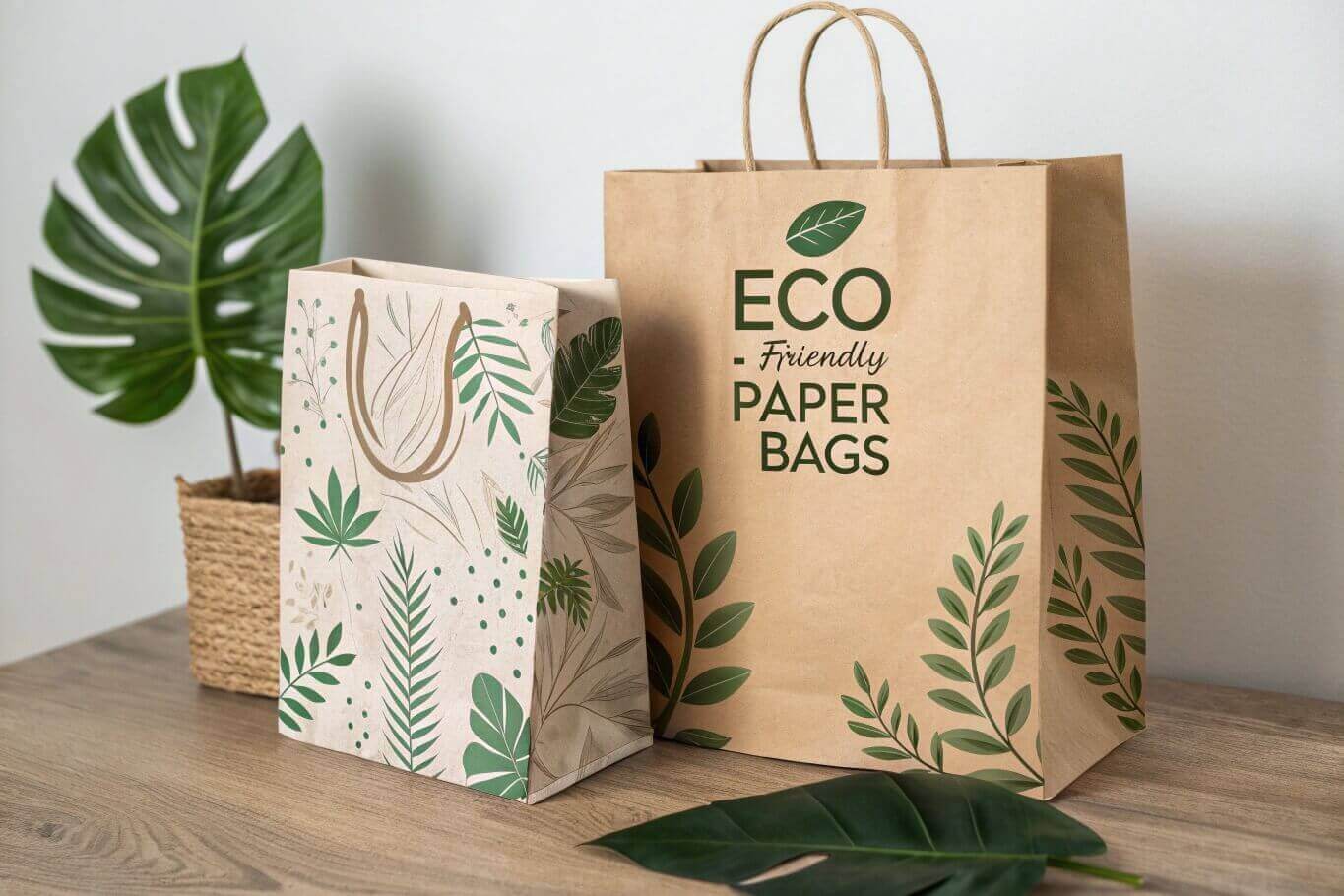Many businesses switch to paper bags believing they are always green. But the truth is more complex. Misuse can cancel out their eco-friendly image.
Paper bags are eco-friendly only if reused and recycled. They are biodegradable and renewable, but production consumes energy and water, so single-use paper bags are not truly sustainable.

Paper bags can be a smart choice, but their benefits depend on consistent reuse and responsible disposal. Let’s break down the facts and compare options.
Are paper bags really eco-friendly?
The debate is ongoing. Many companies adopt paper to appear sustainable, but environmental costs vary depending on how bags are used.
Paper bags are eco-friendly when reused at least three times. They biodegrade and recycle better than plastic, but their high production footprint makes single-use wasteful.

Dive deeper: Production vs. usage
Paper bags are made from renewable raw materials, often from sustainably managed forests. However, production requires more water and energy than plastic.
| Bag Type | Biodegradable | Recycling Rate | Required Uses for Sustainability |
|---|---|---|---|
| Plastic | No | Low | 1 (baseline) |
| Paper | Yes | High | 3+ |
| Cotton | Yes | Low | 131+ |
| Non-woven PP | Yes | Medium | 11+ |
In my experience, the biggest mistake retailers make is treating paper bags as single-use. To gain both environmental and financial value, they must be reused and stored properly.
What are the benefits of a paper bag?
Customers often view paper bags as stylish and eco-friendly. Businesses gain advantages that go beyond packaging.
Paper bags provide branding opportunities, comply with environmental regulations, and improve customer perception. They are recyclable, biodegradable, and customizable with prints, colors, and finishes.

Dive deeper: Benefits for business and environment
Paper bags combine functionality and marketing power.
| Benefit | How It Helps |
|---|---|
| Sustainability | Meets eco laws, reduces plastic use |
| Customization | Logos, QR codes, and finishes turn them into marketing tools |
| Customer Experience | Strong handles and quality finishes improve satisfaction |
| Storage & Handling | Foldable and stackable, saving space |
| Brand Image | Signals responsibility and quality |
I have seen brands turn bags into “walking advertisements.” Customers reuse them, spreading brand exposure and reinforcing eco values.
Is paper an eco-friendly material?
Paper feels natural, but eco-friendliness depends on sourcing and usage.
Paper is eco-friendly when sourced from sustainable forests and recycled properly. Without certifications and reuse, it can consume excessive resources.

Dive deeper: Raw material considerations
- Sustainable sourcing: FSC-certified paper ensures forests are managed responsibly.
- Energy and water use: Paper pulp production is resource-intensive.
- Recycling loops: Paper can be recycled 5–7 times before fibers weaken.
| Material | Eco Potential | Challenge |
|---|---|---|
| Virgin Kraft | Strong, recyclable | High resource input |
| Recycled Kraft | Lower footprint | Shorter fiber strength |
| Coated Paper | Premium look | Harder to recycle |
When working with global buyers, I always highlight certifications. They reassure customers that materials meet international standards.
What is the most eco-friendly bag material?
Every bag type has pros and cons. The best option depends on how long the bag will be used.
The most eco-friendly material is the one reused the most. Non-woven PP bags require 11 uses, paper bags 3+, and cotton bags 131+ to offset their impact.

Dive deeper: Comparing long-term impact
Eco-friendliness is about lifecycle, not just raw materials.
| Bag Material | Required Reuse | Best Use Case |
|---|---|---|
| Plastic | 1 | Cheap, short-term |
| Paper | 3+ | Retail, food, branding |
| Non-woven PP | 11+ | Grocery, daily use |
| Cotton | 131+ | Long-term lifestyle |
I often advise clients to treat paper bags as reusable carriers rather than disposable items. When reinforced with strong handles and coatings, they last longer and support a circular economy.
Conclusion
Paper bags can be eco-friendly, but only with reuse and recycling. The true green choice is consistent, long-term use that balances cost, branding, and environmental impact.

